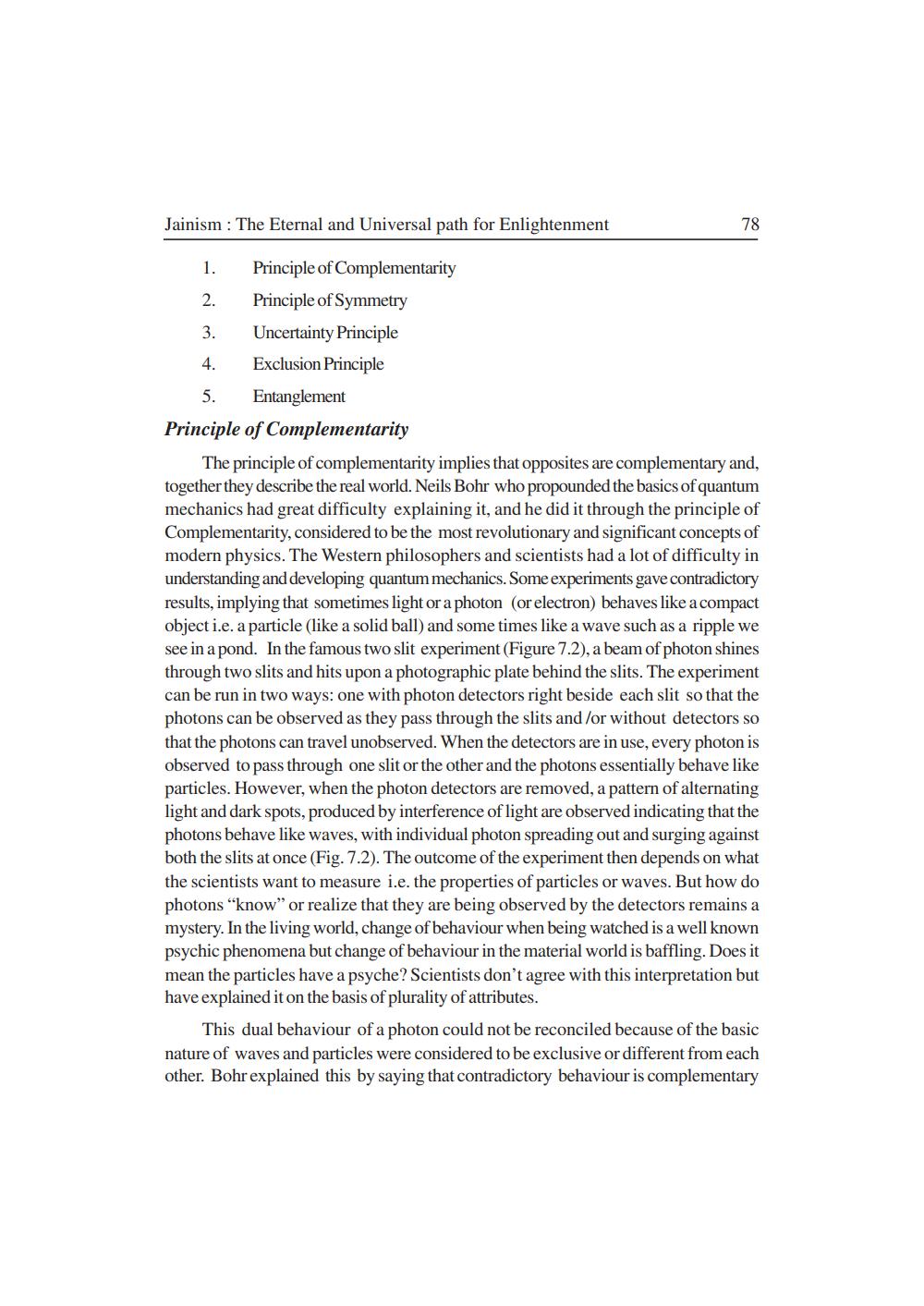________________
Jainism : The Eternal and Universal path for Enlightenment
78
Principle of Complementarity Principle of Symmetry
Uncertainty Principle 4. Exclusion Principle
5. Entanglement Principle of Complementarity
The principle of complementarity implies that opposites are complementary and, together they describe the real world. Neils Bohr who propounded the basics of quantum mechanics had great difficulty explaining it, and he did it through the principle of Complementarity, considered to be the most revolutionary and significant concepts of modern physics. The Western philosophers and scientists had a lot of difficulty in understanding and developing quantum mechanics. Some experiments gave contradictory results, implying that sometimes light or a photon (or electron) behaves like a compact object i.e. a particle (like a solid ball) and some times like a wave such as a ripple we see in a pond. In the famous two slit experiment (Figure 7.2), a beam of photon shines through two slits and hits upon a photographic plate behind the slits. The experiment can be run in two ways: one with photon detectors right beside each slit so that the photons can be observed as they pass through the slits and /or without detectors so that the photons can travel unobserved. When the detectors are in use, every photon is observed to pass through one slit or the other and the photons essentially behave like particles. However, when the photon detectors are removed, a pattern of alternating light and dark spots, produced by interference of light are observed indicating that the photons behave like waves, with individual photon spreading out and surging against both the slits at once (Fig. 7.2). The outcome of the experiment then depends on what the scientists want to measure i.e. the properties of particles or waves. But how do photons "know" or realize that they are being observed by the detectors remains a mystery. In the living world, change of behaviour when being watched is a well known psychic phenomena but change of behaviour in the material world is baffling. Does it mean the particles have a psyche? Scientists don't agree with this interpretation but have explained it on the basis of plurality of attributes.
This dual behaviour of a photon could not be reconciled because of the basic nature of waves and particles were considered to be exclusive or different from each other. Bohr explained this by saying that contradictory behaviour is complementary




